Analyst Desk Value: Maximising Insights for Modern Finance
Updated On: August 23, 2025 by Aaron Connolly
Defining Analyst Desk Value
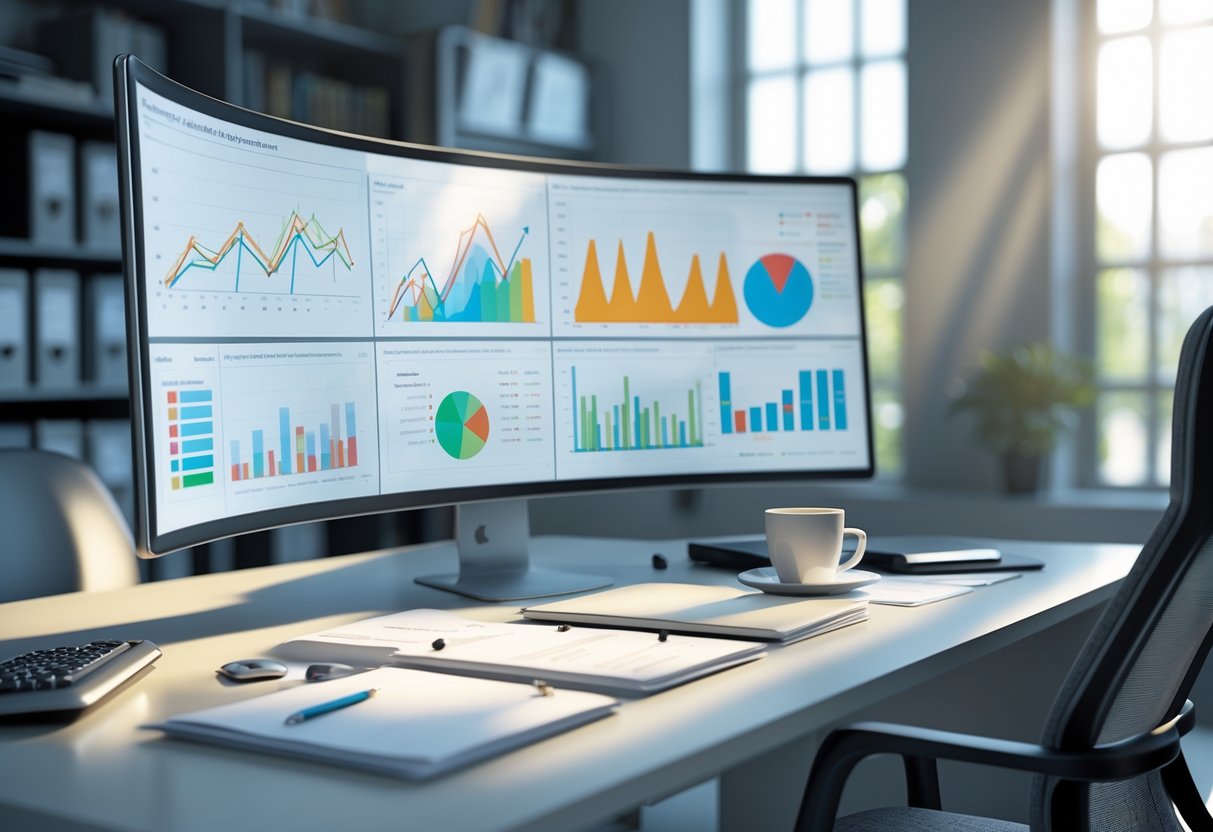
Analyst desks bring measurable value by diving deep into financial analysis, offering strategic decision support, and crafting solutions focused on stakeholders. These functions come together to turn complicated data into insights that actually move the needle for businesses.
Core Functions in Financial Analysis
Analyst desks handle three main financial functions that really drive their value.
Data Processing and analysis lay the groundwork. We gather market data, financial metrics, and trading info from all over the place. Teams then shape this raw data into structured formats that traders and decision-makers can actually use.
Risk Assessment and modelling come next. Analysts dig into possible losses, market swings, and portfolio exposure. They build models to predict how different scenarios might shake up financial performance.
Reporting and Documentation wraps up the analytical cycle. Teams put together daily reports, weekly rundowns, and monthly analyses. These documents track performance, highlight trends, and flag issues before they snowball.
When you put these functions together, you get a solid analytical framework. Each piece backs up the others, making sure financial oversight stays sharp.
Strategic Importance in Decision-Making
Analyst desks stand as key links between raw market data and the big decisions at the top.
Real-Time Market Intelligence gives leaders a direct line to what’s happening right now. We keep an eye on price swings, volume changes, and market mood all day long. This steady stream of info helps execs jump on chances or dodge threats quickly.
Scenario Planning and Forecasting lets teams stay ahead of the curve. Analyst teams model out different market situations and how they might play out. They look at best-case, worst-case, and most-likely results for the major calls.
Competitive Analysis and Benchmarking adds some outside perspective. Teams watch what competitors are up to, follow industry trends, and track market positioning. This helps organisations see where they stand and spot areas to improve.
Decision-makers count on these insights to put capital where it matters, manage risk, and chase growth. The quality of what comes out of the analyst desk really shapes how well strategy works.
Value Creation for Stakeholders
Different groups get different benefits from what analyst desks do.
Trading Teams get a tactical edge right when they need it. Analysts offer market timing tips, position sizing advice, and exit strategies. This support helps boost trading results and cuts down on costly errors.
Senior Management gains strategic clarity through solid reporting. We break down complicated market info into executive summaries that spotlight key risks and opportunities. This makes fast, informed decisions possible.
Risk Management Teams get detailed exposure analysis and stress testing. Analyst desks flag potential trouble spots before they become big problems. Early warnings help protect the organisation from major losses.
External Stakeholders—like investors and regulators—see transparent, accurate reporting. Professional analysis builds trust in how the organisation handles its finances and meets regulations.
Each group leans on analyst desk outputs to do their jobs well.
Key Analyst Desk Segments
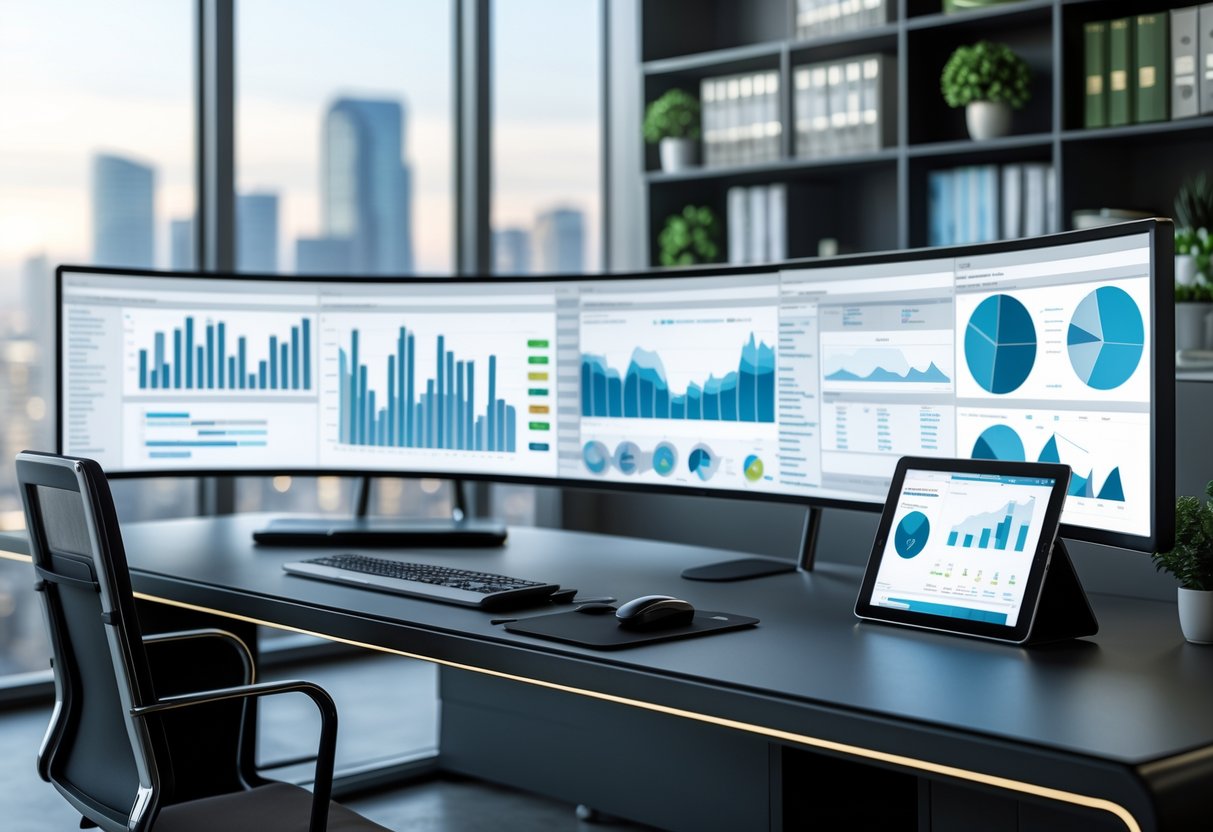
Financial institutions depend on specialised analyst roles, each bringing something unique to the table. These segments work together to break down market data, assess investment opportunities, manage risk, and shape trading strategies.
Market Analysis Roles
Market analysts anchor the interpretation of financial data. They study price moves and trading patterns to get a sense of what the market might do next.
Most days, these professionals sift through historical data and current trends. They keep tabs on economic indicators like inflation and employment numbers. Market analysts also watch news that could swing stock prices.
Key responsibilities include:
- Creating daily market reports
- Spotting trading opportunities
- Tracking sector performance
- Forecasting price moves
Market analysts track how accurate their predictions are using performance metrics. They often hit 60-70% accuracy on short-term forecasts.
You need sharp analytical skills and real attention to detail for this role. Most market analysts put in 50-60 hours a week during busy trading times. In the UK, salaries usually fall between £45,000 and £80,000.
Investment Analysis Contributions
Investment analysts focus on individual securities and investment opportunities. They dig deep to guide portfolio decisions and asset allocation.
These analysts pore over company financials and industry trends. They review quarterly earnings and judge management quality. Investment analysts also figure out fair value estimates for stocks and bonds.
Core activities involve:
- Financial statement analysis
- Valuation models for companies
- Industry competitive analysis
- Risk-return assessments
They measure their success with metrics like return on investment and risk-adjusted returns. Top analysts often see their picks beat the market by 3-5%.
This job needs strong math skills and a solid grasp of finance. Investment analysts usually work regular hours, but things can get busy during earnings season. Pay ranges from £50,000 to £90,000, depending on experience and the firm.
Risk Analysis Functions
Risk analysts keep financial institutions safe by spotting threats to investment strategies. They measure risks and make sure trading stays within set boundaries.
These experts build models to track portfolio volatility and potential losses. They watch market conditions for rising risks. Risk analysts also stress-test portfolios against different market scenarios.
Primary duties include:
- Calculating value-at-risk
- Monitoring portfolio exposures
- Creating risk reports for management
- Setting up risk controls
Risk analysts check their effectiveness with metrics like risk-adjusted returns and how well they predict losses. Good risk management can save organisations millions.
You’ll need a strong background in statistics and probability for this job. Risk analysts usually keep regular hours but might need to act fast during market crises. Salaries range from £55,000 to £95,000 in big financial centres.
Quantitative Analyst Desk Segments
Quantitative analysts, or “quants,” use high-level math to build trading algorithms and pricing models. They connect academic finance with day-to-day trading.
Quants develop complex models for option pricing and algorithmic trading. They code systems that can execute thousands of trades every second. Quants also run back-tests using tons of historical data.
Main responsibilities encompass:
- Building trading algorithms
- Creating derivative pricing models
- Optimising portfolio allocation
- Developing risk management systems
Quantitative analysts judge their work with hard numbers—algorithm profitability, execution speed, and model accuracy. The best algorithms can earn millions each year.
You’ll usually need an advanced degree in math, physics, or computer science. Quants often put in long hours to fine-tune their models. Salaries start at about £70,000, but top talent can make over £150,000 at leading firms.
Technology Integration at the Analyst Desk
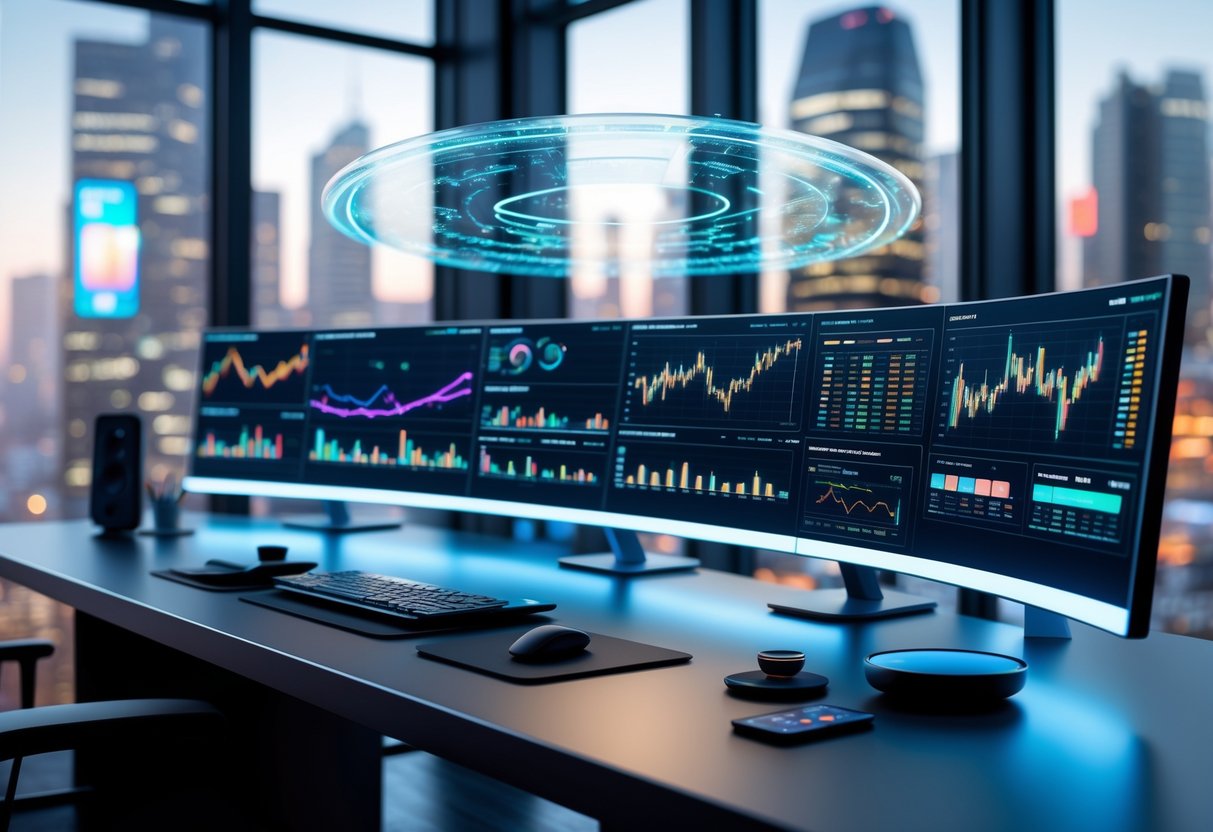
Modern analyst desks run on sophisticated tools that turn raw data into insights for esports teams and organisations. Machine learning algorithms now handle pattern recognition, while advanced analytics platforms track performance in real time during matches.
Advanced Data Analytics Tools
Analyst desks today lean on platforms like Tableau, Power BI, and specialised esports analytics software to handle huge datasets. These tools track player stats, team coordination patterns, and opponent tendencies across thousands of matches.
Popular analytics platforms include:
- Mobalytics – Tracks player performance
- OP.GG – Analyses match history
- GRID Esports – Offers pro tournament data
- Custom dashboards – Focus on team-specific metrics
We use these tools to make visual reports that coaches can actually use. The software pulls data from game APIs and turns it into interactive charts and heat maps.
Most pro teams spend £2,000-£5,000 a month on analytics subscriptions. Free options like League of Legends’ built-in match history offer basic insights for smaller teams.
Role of Machine Learning Algorithms
Machine learning algorithms help analysts spot patterns humans might overlook in massive datasets. These systems analyse player behaviour, predict opponent strategies, and flag performance trends automatically.
Common applications include:
- Player form prediction – Spotting when players are hot or cold
- Draft analysis – Suggesting the best team compositions
- Map control patterns – Tracking who controls which areas
- Clutch performance – Measuring how players handle pressure
We use machine learning algorithms to process replay data from lots of matches at once. The tech picks out recurring mistakes or winning tactics teams can use.
Heads up: Machine learning tools need clean, consistent data to work well. If the data’s messy, the predictions won’t be reliable.
Automation and Workflow Management
Automation tools save analysts from repetitive chores like collecting data, making reports, or prepping for matches. That way, they can focus on strategy instead of manual work.
Key automation features:
- Automated match reports – Ready within hours after a match
- Performance alerts – Notifications when metrics change a lot
- Scheduled analysis – Regular reviews of team performance
- Data synchronisation – Automatic updates from different sources
We set up workflow management systems to assign tasks across the team. Analysts get reminders for pre-match prep and post-match reviews.
Most automation tools cost £100-£500 a month for small teams. Open-source options like Python scripts offer basic automation for those on a budget.
Data Analytics Techniques in Analyst Desks
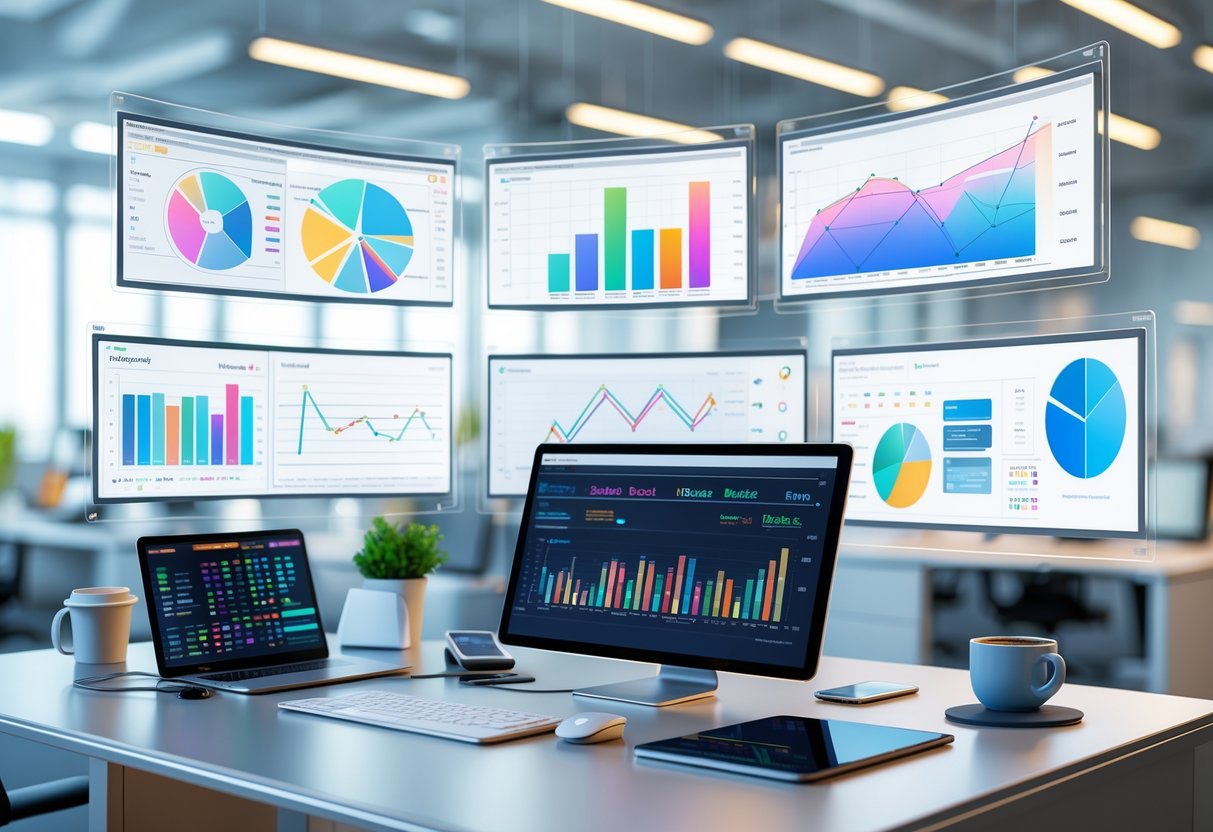
Analyst desks lean on three main data analytics approaches to deliver accurate market intelligence. Statistical methods uncover hidden patterns in trading data, predictive models forecast market moves, and real-time processing makes sure decisions stay current.
Statistical Methods for Market Insights
We use regression analysis to see how different market variables affect stock prices and trading volumes. This technique digs into past data to spot links between economic indicators and market performance.
Cluster analysis helps us group similar trading patterns and behaviours. By sorting data points with similar traits, we can spot distinct market segments. This method uncovers patterns that standard analysis might miss.
Factor analysis cuts through the noise by shrinking lots of variables into a few key groups. When we face hundreds of market indicators, this technique helps us find what really drives the market.
Time series analysis tracks market data over specific periods to spot trends and seasonal patterns. We use it to see how variables shift under different conditions and figure out what sparks certain trends.
Predictive Modelling Applications
Machine learning algorithms drive our predictive models to forecast market moves and flag trading opportunities. Neural networks handle mountains of historical trading data, picking up patterns and predicting future prices with more accuracy over time.
Decision trees let us map out different trading scenarios, showing possible outcomes and costs. We can size up multiple market conditions and pick the most profitable strategies based on what the models suggest.
Cohort analysis compares different groups of market players over time. We track how various investor types act during different markets, which helps us predict future patterns and sentiment.
Data mining digs through huge datasets to find correlations, trends, and dependencies for better trading decisions. We use it to spot anomalies, detect risks, and discover new investment chances across asset classes.
Real-Time Data Processing
Data analytics systems handle live market feeds, giving us instant insights for trading. We clean and crunch streaming data from exchanges, news, and economic indicators to keep our market view up to date.
Real-time cluster analysis matches current market conditions with past patterns to predict short-term price moves. This helps us spot when today’s market looks like a previous scenario that led to big price swings.
Live regression models update constantly as new data rolls in, tweaking predictions on the fly. We use these to adjust strategies as the market changes during the day.
Streaming data visualisation turns complex, real-time market data into easy-to-read charts and graphs. These visuals help traders catch trends, odd trading volumes, and market opportunities as they happen.
Performance Metrics and Evaluation
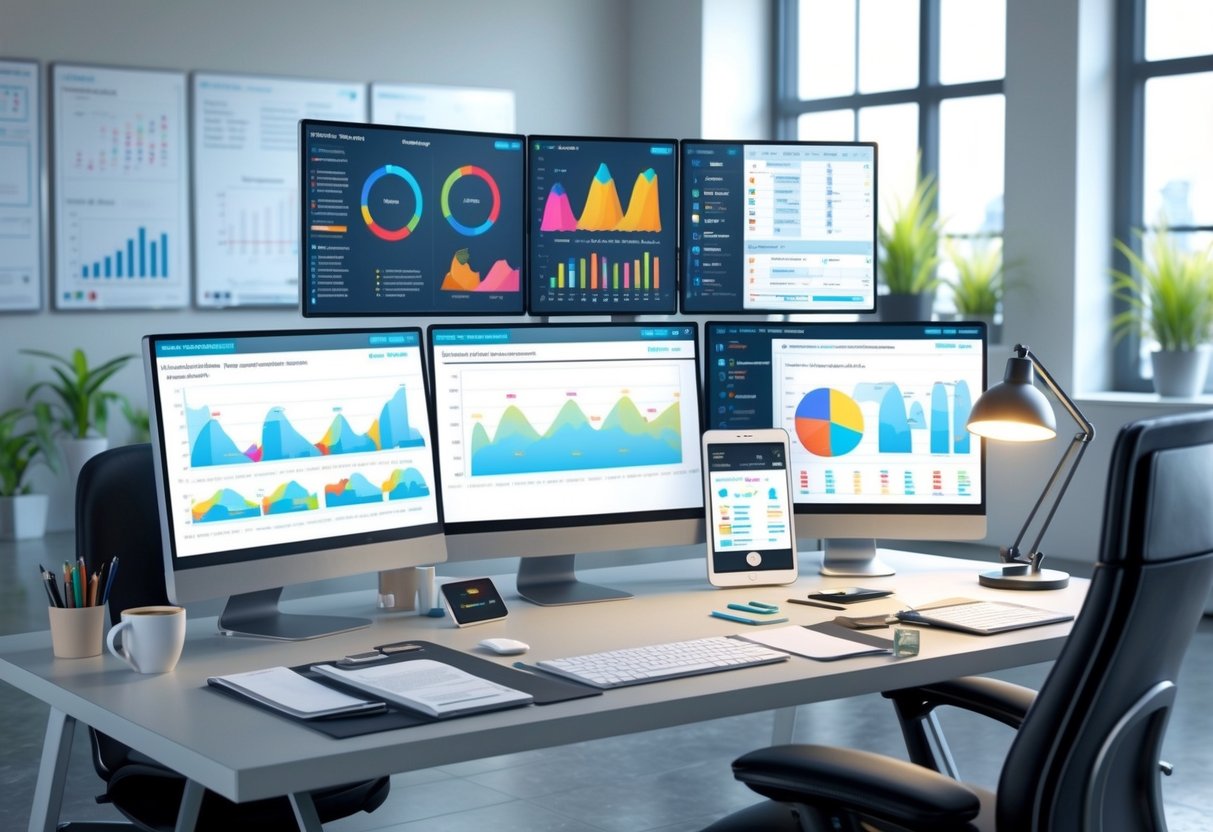
Measuring analyst desk performance means tracking specific outputs, watching decision support quality, and comparing results to industry benchmarks. These metrics help teams see their impact on competitive gaming organisations and spot ways to get better.
Tracking Analyst Desk Output
We track analyst desk productivity using a few key metrics. Ticket volume tells us how many analysis requests teams get through each day. Most esports analyst desks handle between 15 and 25 requests daily.
First contact resolution shows us when analysts solve problems right away. The best desks hit 70-85% first contact resolution rates.
Fast response times matter a lot in esports. We monitor first response time and time to resolution. Top analyst desks usually reply within 2 hours during tournaments.
| Metric | Industry Average | Top Performers |
|---|---|---|
| Daily tickets handled | 15-20 | 25-30 |
| First contact resolution | 65-75% | 80-85% |
| Average response time | 4 hours | 2 hours |
Backlog management gives us a sense of workflow health. Good desks keep backlogs under 48 hours during normal times.
KPIs for Decision Support
Measuring decision support quality takes a different approach. We track accuracy rates for match predictions and player forecasts. The strongest desks hit 75-80% accuracy on strategic calls.
We ask coaches and team managers to rate analytical support with stakeholder satisfaction surveys. These go out monthly and use a 1-10 scale.
Report utilisation shows which analyses actually get used. High-value desks see 85-90% of their reports referenced in meetings or strategy sessions.
We connect analytics to real outcomes with revenue impact. We look at the link between analyst recommendations and things like tournament performance or sponsorship wins.
Quick win: Try monthly feedback sessions with coaches. You’ll get a better sense of which metrics matter most to your org.
Benchmarking Desk Performance
Comparing performance helps us spot where to improve. We benchmark against similar esports orgs and traditional sports analytics teams.
Peer comparison means sharing anonymised metrics with other analyst desks. Lots of UK esports teams join quarterly benchmarking groups.
We watch for changes over time with historical trending. Tracking 6-month rolling averages helps us notice patterns and seasonal swings.
Cost per analysis gives us a handle on efficiency. Divide total desk costs by completed analyses. The industry average sits around £25-45 per request.
Warning: Don’t compare yourself to IT help desks—esports analyst needs are a whole different beast.
Industry standards shift depending on game and org size. MOBA teams often need 40% more analytical support than FPS teams during tournaments.
Collaboration Across Finance and Sales
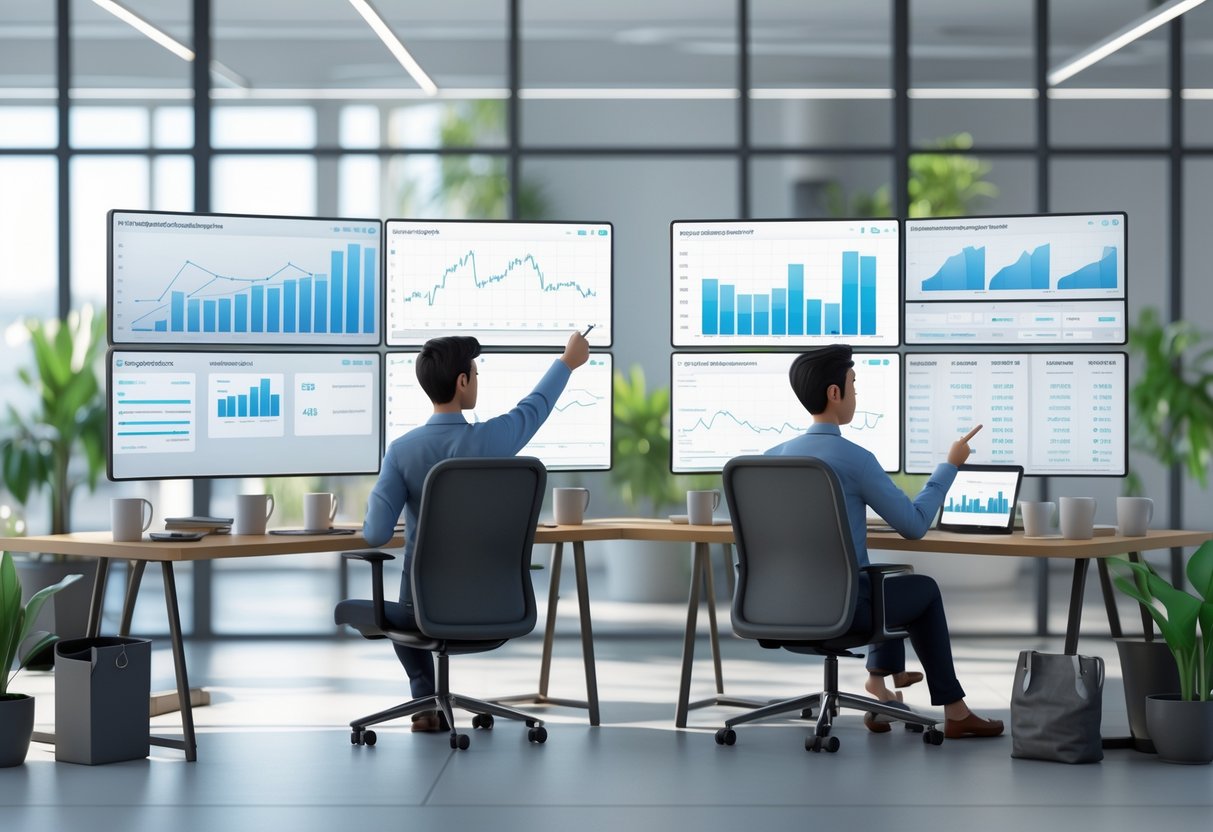
Deal desk analysts sit at the center, connecting finance with sales ops. They make sure pricing decisions fit company profits and help sales close deals faster.
Bridging Front- and Back-Office Teams
Deal desk analysts have to act as translators between sales and finance. Sales pushes to close deals quickly. Finance worries about profit margins and risk.
During deal reviews, analysts bring both sides together. They present financial data in ways sales can actually use. They also explain what customers want to finance.
Key collaboration areas include:
- Pricing approval workflows
- Discount limit discussions
- Payment terms negotiations
- Risk assessment meetings
Finance hands over profitability guidelines. Sales shares customer feedback and market pressures. The analyst takes both sides and structures stronger deals.
This teamwork keeps deals moving. It also stops unprofitable agreements from slipping through.
Coordinating with Revenue Operations
Revenue ops teams count on deal desk analysts for clean data and process tweaks. This partnership is crucial for tracking deals through the whole sales cycle.
The analyst feeds deal structure info into revenue systems. They also spot approval bottlenecks. Revenue ops uses this data to boost forecasting accuracy.
Typical coordination tasks:
- Deal scoring and prioritisation
- Contract compliance checks
- Pipeline reporting updates
- Process automation planning
Revenue teams build out systems and workflows. Deal desk analysts use these every day and suggest changes. Together, they standardise processes for everyone.
This teamwork helps finance predict revenue better. It also gives sales clearer direction on which deals to chase.
Optimising Desk Structures for Value
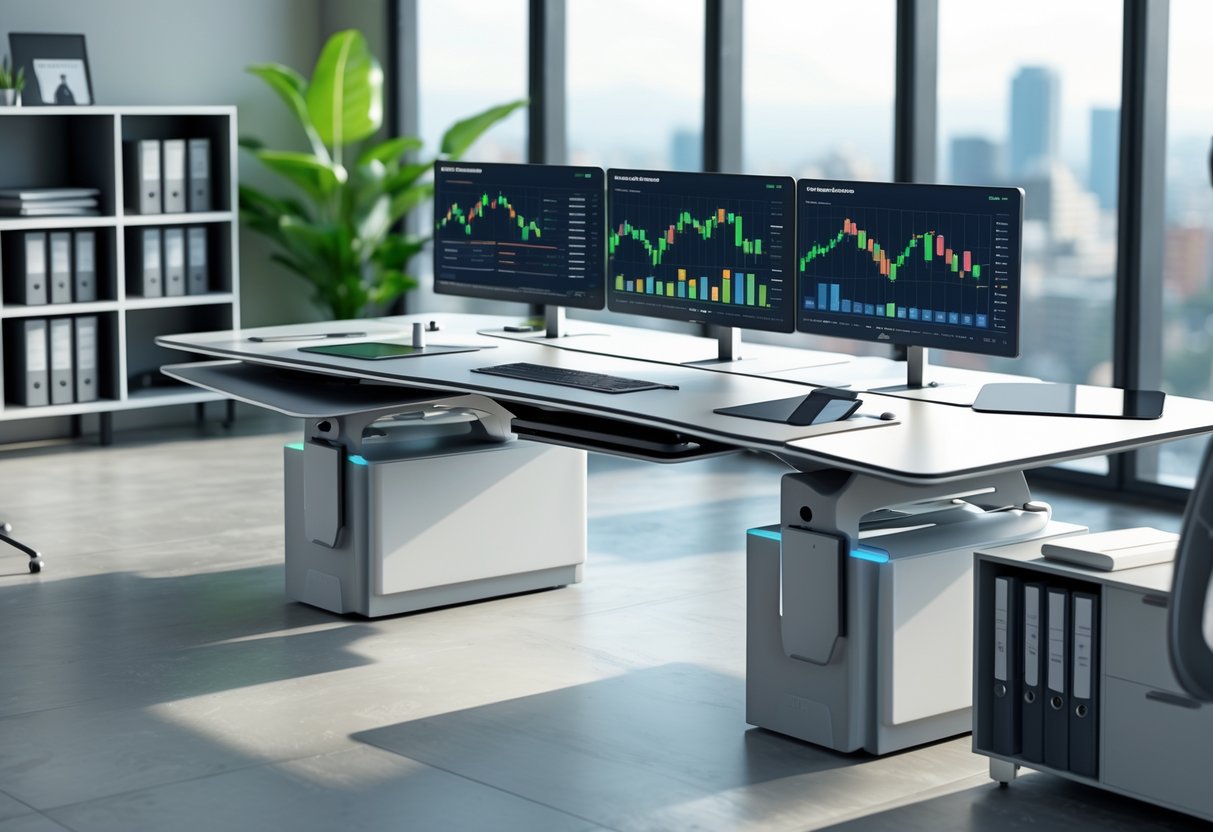
Smart desk structures can boost analyst output by up to 40% with better role division and workspace design. The right mix of specialised roles and thoughtful layouts creates more efficient research teams.
Dividing Analyst Roles Effectively
We need clear role separation to cut out duplicate work and skill gaps. Senior analysts take on complex market analysis and client presentations. Junior analysts focus on data gathering and initial research.
Research specialists thrive when they own a sector or region. This builds real expertise over time. Quantitative analysts need different workflows than qualitative researchers.
Try building these core roles:
- Lead analysts for client strategy and final reports
- Data analysts for numbers and trends
- Research associates for info gathering
- Quality reviewers for report accuracy
Every role should have clear responsibilities and escalation paths. Don’t make analysts switch between totally different tasks in one day. That kind of context switching tanks productivity by up to 25%.
Pair up seniors and juniors for mentoring. This speeds up learning and keeps quality high.
Physical and Virtual Desk Layouts
Physical desk placement shapes how well people collaborate and focus. Quiet zones are best for deep work. Collaboration areas should sit apart from solo workspaces.
Keep senior analysts close to juniors for quick help. Group data specialists together—they share tools and methods a lot. Put client-facing analysts near meeting rooms.
For virtual setups, we like:
- Shared screens for real-time work
- Digital whiteboards for brainstorming
- File sharing systems with version control
- Video conferencing spaces for client calls
Hot-desking is fine for part-timers but needs a booking system. Fixed desks work better for analysts with lots of monitors or gear.
Noise matters. Analysts need about 20 minutes to refocus after interruptions. Sound barriers or separate floors can help.
Tech placement counts too. Keep printers and scanners away from quiet zones. Make sure internet connections can handle heavy data loads.
Role of Research and Industry Insights
Research analysts pull together sector data and turn complex info into usable insights. They dig into reports, conference calls, and live market data to map out industry trends.
Gathering Sector-Specific Information
We depend on analysts to collect deep info from their focus areas. Each analyst sticks to a sector like healthcare, gaming, or finance. This focus helps them spot regulatory changes, market shifts, and new tech.
Analysts talk directly with end-users and industry buyers. These chats show what actually works—not just what companies claim. They also hit up conferences and briefings for first-hand info.
Data analytics is huge here. Analysts use different tools to process big data fast. They search for patterns in user behaviour, market growth, and competition.
Analysts gain unique insights from all these experiences. Most professionals just don’t get to as many industry events or tap the same sources. This broad exposure lets analysts spot trends early.
Utilising Reports and Conference Calls
Conference calls and detailed reports are the backbone of analyst research. We use these to understand company performance, market conditions, and future outlooks. Quarterly earnings calls highlight management priorities and market challenges.
Analysts cross-check info from multiple reports to keep things accurate. They compare what vendors say with user feedback and market data. This helps cut through marketing hype.
The best insights come from mixing numbers with real conversations. Data shows what’s happening, but interviews and calls reveal why it matters. This mix leads to better forecasts and recommendations.
Heads up: Some analysts lean too much on vendor info without checking independently. Look for research that uses lots of sources and real-world testing.
Driving Strategic Value Through Analyst Desks
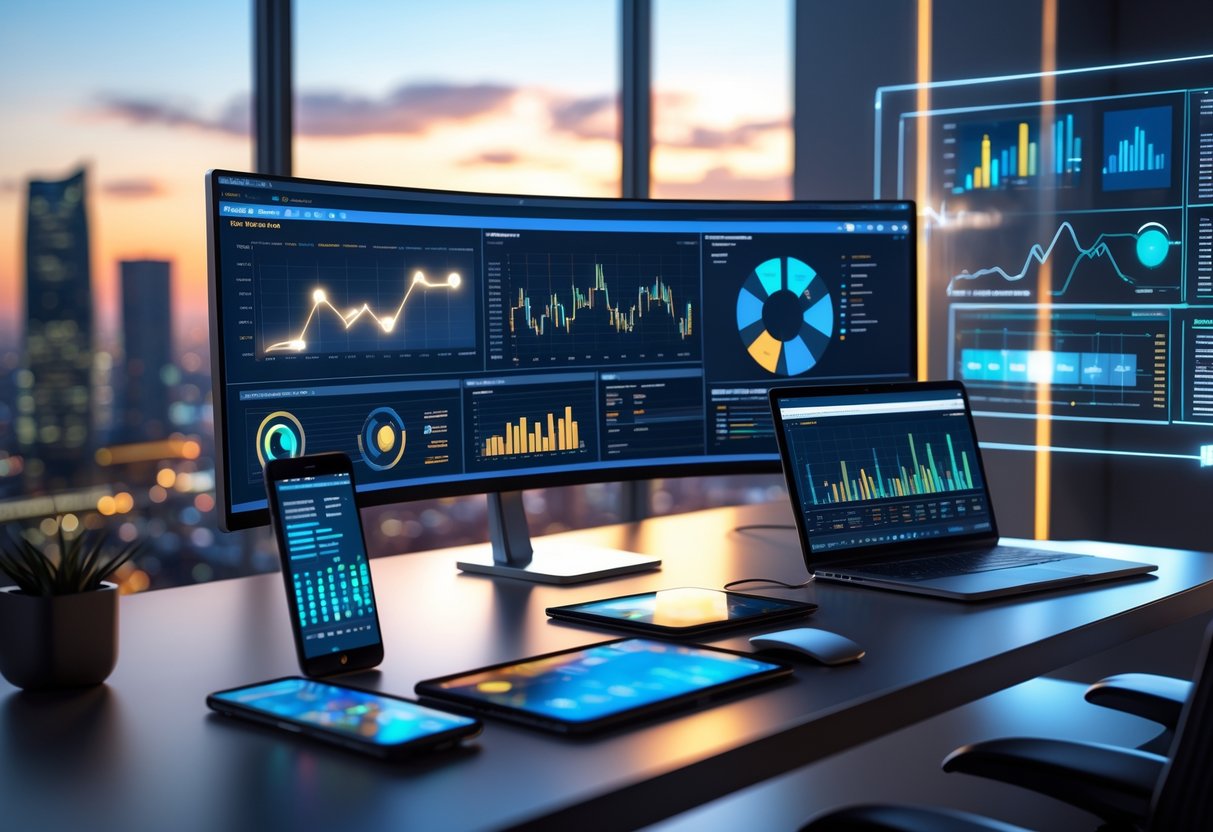
Deal desk analysts make a real impact by turning complex data into clear recommendations. They directly shape how organisations approach their biggest deals.
Creating Actionable Recommendations
Deal desk analysts shine when they turn raw deal data into clear steps for sales teams. They don’t just spot pricing issues—they point out exactly which discount thresholds work and which ones cut into profits.
Effective recommendations include:
- Specific discount ranges for different deal sizes
- Risk scoring models to flag tricky customers early
- Clear approval workflows to speed up decisions
Deal desk analysts build these frameworks using real deal results. They track win rates by pricing strategy and customer segment. This data helps them predict which deals will close.
When analysts present findings, they focus on next steps. Instead of saying “pricing needs improvement,” they’ll say “reduce discounts above 20% for enterprise deals under £50k.” That kind of detail helps sales move fast and protect margins.
The best analysts also create deal playbooks. These guides show teams exactly how to structure complex deals and avoid common mistakes.
Influencing Organisation Strategy
Deal desk analysts also shape company strategy by giving leadership data-driven insights on market trends and competition. Their daily deal reviews reveal patterns that guide long-term decisions.
Strategic contributions include:
- Spotting which market segments are most profitable
- Recommending product bundles based on successful deals
- Highlighting competitive threats through pricing analysis
Analysts have even influenced product roadmaps by showing which features customers want most in negotiations. They track which deal terms boost renewal rates and satisfaction scores.
Senior leaders rely on deal desk insights for quarterly planning. Analysts supply forecasting data to predict revenue and resource needs. They also flag operational bottlenecks that slow down deals.
Their cross-team perspective makes analysts valuable advisors. They see how sales, legal, and finance choices affect each other. This lets them recommend process changes that lift overall performance, not just individual deals.
Professional Development for Analyst Desk Teams

Building strong analyst desk teams means focusing on both technical skills and ongoing development. The best teams blend financial analysis with sales knowledge and strong communication.
Essential Skills and Qualifications
The strongest deal desk analysts usually come from finance, sales ops, or business analysis backgrounds. Most have business, finance, or economics degrees.
Core technical skills:
- Financial modelling and pricing strategy
- Contract analysis and risk assessment
- CRM platforms like Salesforce
- Excel and data tools
Communication skills count just as much. Analysts work with sales, legal, and finance every day. They need to explain complex deals clearly.
A lot of great analysts start in sales support roles. That gives them real experience with customer negotiations and sales processes.
Industry knowledge grows over time. Top analysts know their company’s products, competitors, and market. This helps them build deals that actually work.
We suggest looking for candidates with 2-3 years in sales ops or finance. Fresh grads can do well too, if they show strong analytical thinking.
Continuous Training and Learning
Deal desk work changes all the time as markets shift and new tools appear. We run training on both technical skills and industry trends.
Monthly training sessions work best. Cover new pricing models, legal updates, and sales methodology. Keep it short and practical.
Cross-department collaboration training helps analysts work better with other teams. Sales processes vary, so analysts need to understand their own organisation’s style.
Technology training is a must. New CRM features, automation tools, and analytics platforms pop up often. Analysts who keep up work more efficiently.
Many analysts go for certifications in sales ops or revenue management. These teach advanced deal structuring and risk assessment.
We encourage analysts to attend industry events and webinars. They pick up market trends and connect with peers facing similar challenges.
Real development happens through hands-on deal experience. Pair new analysts with experienced teammates for complex negotiations.
Common Challenges and Solutions
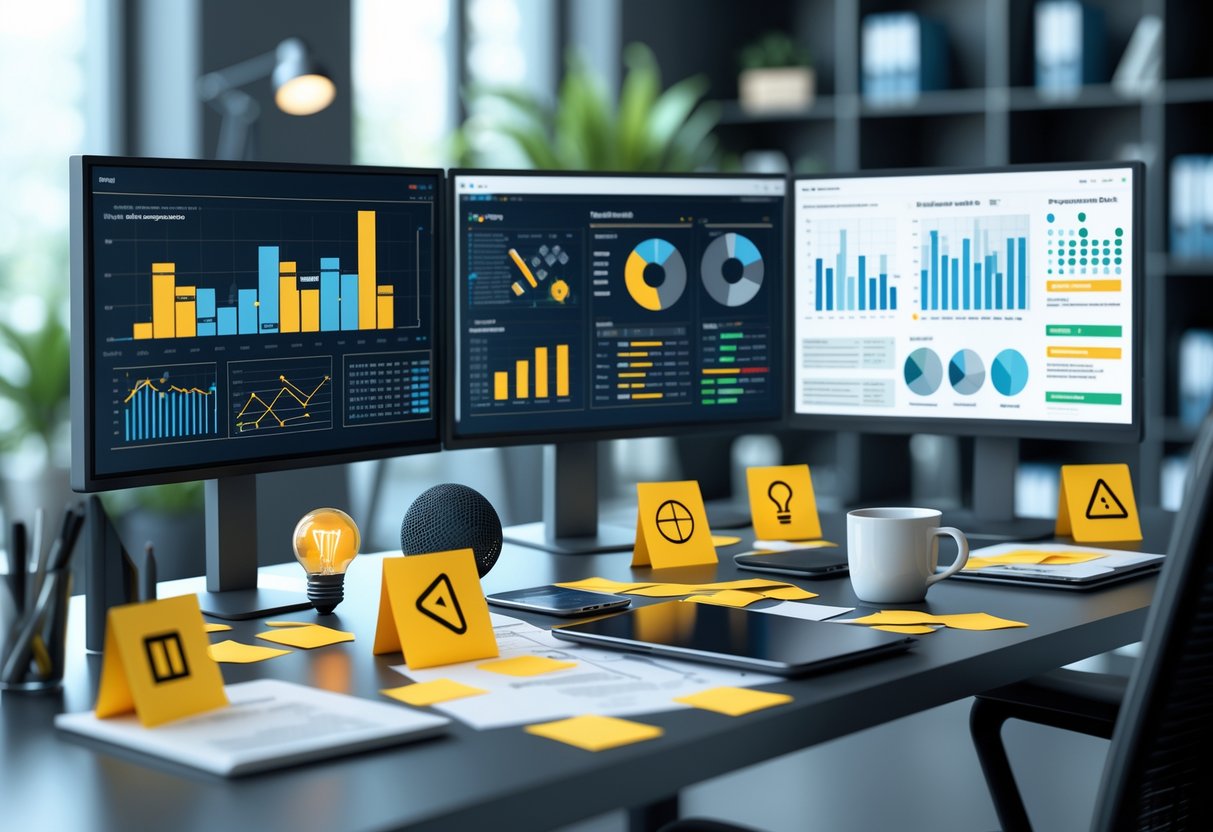
Analyst desks in esports run into all sorts of hurdles with data integration and resource allocation. These issues have a direct impact on how well teams can actually use data analytics to boost performance and make smarter strategic moves.
Data Integration Barriers
Trying to get data from different sources to play nicely together? That’s still one of the most annoying problems for esports analyst desks. You might pull match data from game APIs, grab player stats from third-party sites, and then add in opponent research from manual scouting.
Technical Integration Problems:
- Game APIs sometimes change with zero warning.
- Data formats rarely match across platforms.
- Newer games often lack historical data.
- Live matches can experience real-time data delays.
Teams usually tackle this mess with middleware tools that standardize everything. Some folks whip up custom Python scripts, while others lean on platforms like Tableau to manage multiple sources.
Quick win: Start simple. Pick one main data source and build from there. Most successful desks begin with in-game stats, then add more as they go.
I’ve seen too many teams try to integrate every source right away. That approach tends to backfire, causing more chaos and unreliable analytics.
Resource Allocation Issues
Esports organizations often juggle analyst desk budgets between staff, tech, and training. With competitive gaming growing so fast, teams are making these calls without much precedent.
Common Budget Challenges:
- Staff costs: Experienced analysts can ask for £35,000-£50,000 a year.
- Software licensing: Pro analytics tools run £200-£500 per month.
- Hardware requirements: High-end computers are a must for real-time work.
- Training expenses: Analysts need to stay sharp on new games and methods.
Successful teams often put about 60% of their budget toward people, 25% on tech, and 15% for training and development. This split gives you skilled staff, good tools, and keeps everyone up to date.
Warning: Skimping on training is a big mistake. It leads to outdated analysis that quickly falls behind the game’s meta.
The best teams start small with just the essentials, then scale up once they see real improvements in performance.
Future Trends and Innovations in Analyst Desk Value
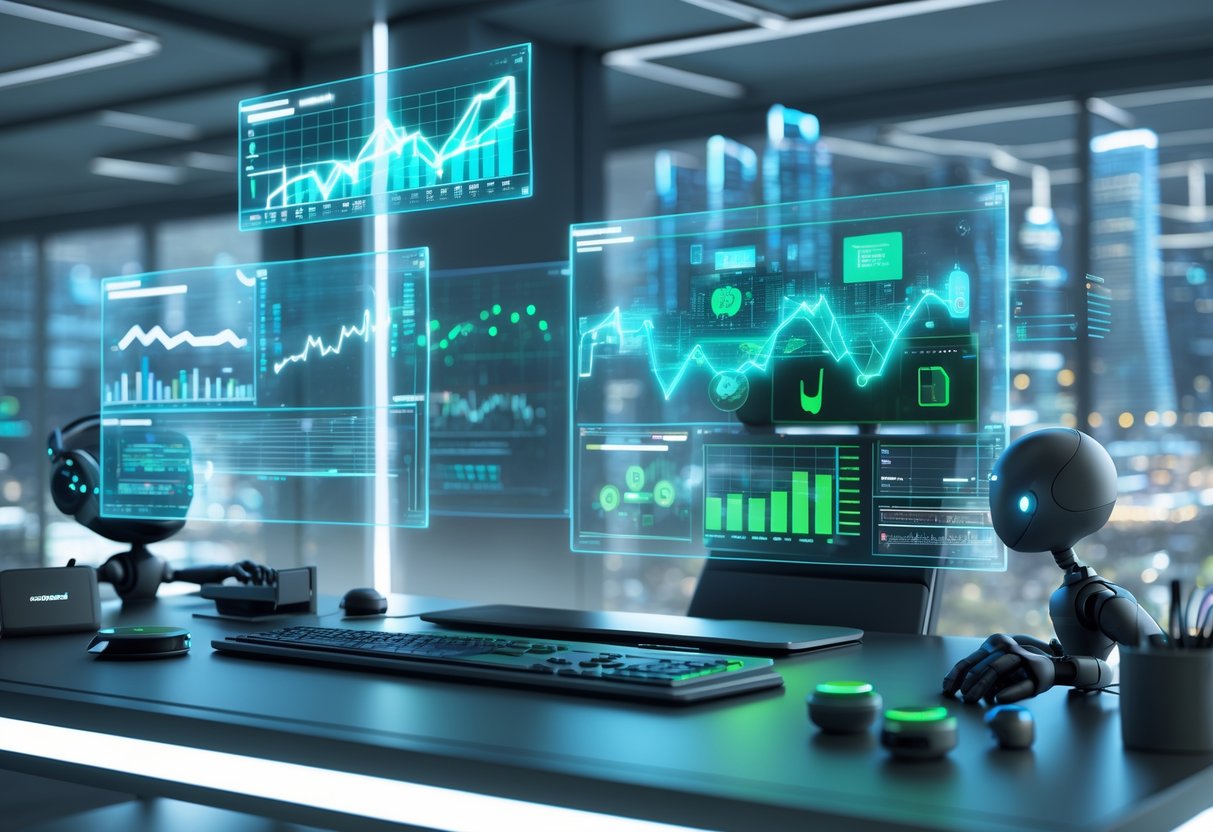
Financial analysis is changing fast, thanks to new tech like machine learning. These tools are shaking up how we look at investments. At the same time, analysts now need skills that go way beyond just crunching numbers.
Emerging Technologies in Finance
Machine learning algorithms are flipping the script on how we measure analyst desk value in the financial world. These clever systems chew through huge amounts of market data in real time, picking up on patterns that old-school analysis could easily miss.
Advanced Analytics Tools:
- Predictive models for price forecasts.
- Sentiment analysis from news and social feeds.
- Automated risk checks.
- Pattern recognition for market behavior.
AI-powered platforms now analyze earnings reports, economic stats, and market mood all at once. This leads to sharper valuations and less human bias.
Machine learning also lets us build dynamic pricing models that tweak recommendations as the market shifts. These systems can spot risks or opportunities way faster than manual methods.
Big data analytics now pulls in alternative sources too. Social media buzz, satellite images, and consumer trends all feed into investment decisions, right alongside classic financial numbers.
Shifting Expectations for Analyst Roles
Analysts today need to mix technical know-how with strategic thinking and solid communication. We’re not just crunching numbers anymore—we’re helping steer business decisions.
Key Skill Requirements:
- Data visualization chops.
- Collaboration with other teams.
- Familiarity with new tech.
- Strong presentation skills.
Clients want analysts to turn complex data into actionable insights. Storytelling matters almost as much as technical skills now.
The job is more about real-time analysis than ever. Analysts need to give instant takes on market moves and breaking news.
Specialized knowledge is in demand too—think ESG, crypto, and emerging tech. Analysts who know these fields add extra value.
Working closely with data scientists and tech teams has become standard. Analyst desks now blend traditional finance expertise with cutting-edge analytics.
Frequently Asked Questions
Investors usually have a lot of questions about analyst desk value and how pros actually make decisions on stocks. People want to know about everything from price targets to which analysis platforms are worth their time.
What factors do analysts consider when setting price targets for stocks like NVDA?
Analysts weigh several key things when setting price targets for NVDA or similar tech stocks. Financial performance comes first—revenue growth, profit margins, and cash flow trends all matter.
Market position is another big one. Analysts check how NVDA stacks up against rivals like AMD and Intel, looking at market share and new products.
They also dig into future growth potential. For NVDA, this means tracking AI demand, data center expansion, and gaming trends. Regulatory risks and supply chain hiccups can affect targets too.
Technical analysis plays a part. Chart patterns, trading volumes, and support levels help analysts set realistic numbers. They blend this with fundamental analysis for a full picture.
How can an individual investor access and interpret AMD stock analysis from experts?
Most brokerages give account holders free access to analyst research. Charles Schwab, Fidelity, and Interactive Brokers all offer detailed reports from big-name banks, including buy/sell ratings and price targets.
Sites like Yahoo Finance and MarketWatch collect analyst opinions and show consensus ratings for AMD. It’s a quick way to check where the experts stand.
Some professional platforms, like Bloomberg Terminal and FactSet, go much deeper. They’re pricey, but you get the most thorough analysis out there.
When reading analyst reports, pay attention to the reasoning behind recommendations. Look for clear financial forecasts and risk factors. It’s smart to compare a few different opinions instead of just trusting one.
What resources do trade analysts typically use to decide whether a stock like Trade Desk is a strong buy?
Analysts pull from a bunch of sources to evaluate Trade Desk. Financial databases like Bloomberg and Refinitiv supply real-time data and historical trends, plus detailed statements and peer comparisons.
They also check out industry reports from firms like Gartner and IDC for context on the ad tech market. This helps analysts see where Trade Desk fits in.
Management guidance is key. Earnings calls and investor presentations reveal company strategy and revenue forecasts.
Technical analysis tools like TradingView and MetaStock help analysts time their recommendations, letting them spot good entry and exit points.
Could you explain the significance of the term ‘analyst desk value’ within the context of stock market trading?
Analyst desk value means the research and insights pro analysts bring to investors. Their expertise in evaluating companies and market trends is what investment firms depend on to make smart trades.
This value covers a few main things. Price targets give investors specific numbers to watch. Buy, hold, and sell ratings offer clear guidance.
Research reports dig into details individual investors might miss—industry comparisons, financial models, risk checks, and timing recommendations.
Institutional investors pay hefty fees for this. The insights help fund managers beat the market. Retail investors can get similar value through brokerage research.
What are the most reliable platforms for checking real-time analyst ratings and stock market projections?
Bloomberg Terminal is the top choice for pros. It costs about £24,000 a year, but you get unmatched real-time data, analyst ratings, price targets, and in-depth reports.
For everyone else, Yahoo Finance is a solid free option. It pulls together analyst ratings and consensus targets, updating fast when things change.
MarketWatch is another good free pick. Their coverage includes summaries of rating changes and historical trends.
Paid platforms like Morningstar and Zacks offer extra features, such as report summaries and unique rating systems. Prices range from £15 to £50 a month, depending on what you need.
How does one use tools like Finviz and TipRanks to make informed trading decisions on stocks?
Finviz really shines when it comes to stock screening and visual analysis. You can jump right into their screener and filter stocks by analyst ratings or price targets.
I like using the heat map—it quickly highlights which sectors analysts seem to prefer at the moment.
On Finviz, the charts throw technical indicators and fundamental data together, which makes it easier to spot stocks that are getting analyst upgrades while also breaking out technically.
If you’re looking for ideas, try focusing on stocks with strong analyst ratings and charts that are starting to look better.
TipRanks, on the other hand, zeroes in on analyst performance. It actually ranks analysts by how accurate they’ve been over time.
This way, you can decide which analysts are worth paying attention to in different sectors.
TipRanks’ price target charts lay out the whole range of analyst opinions. When you see a wide spread, it usually means there’s a lot of uncertainty. Tight ranges? That’s more of a consensus.
You’ll also find data on insider trading and hedge fund moves, which adds another layer of context if you’re trying to make sense of the noise.
